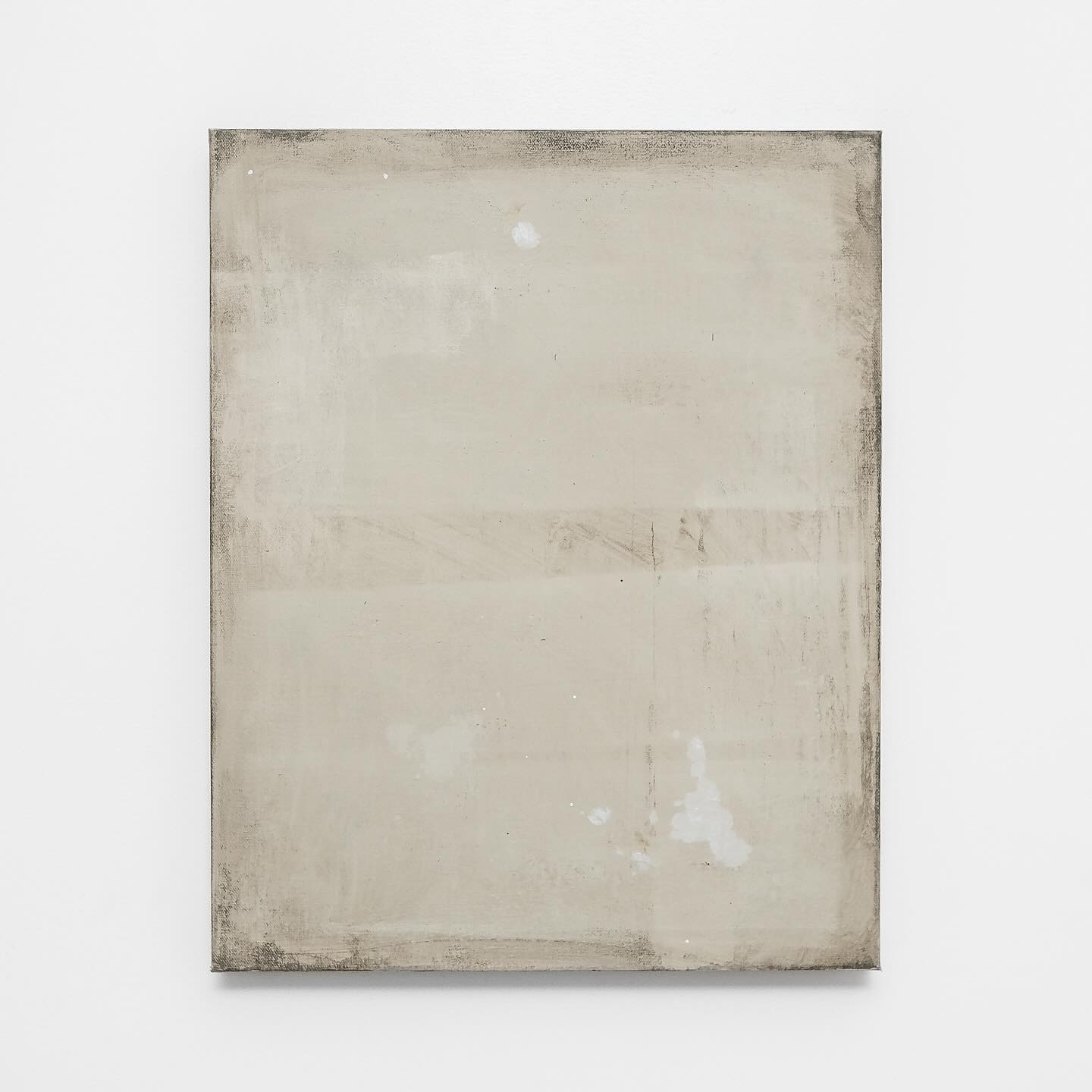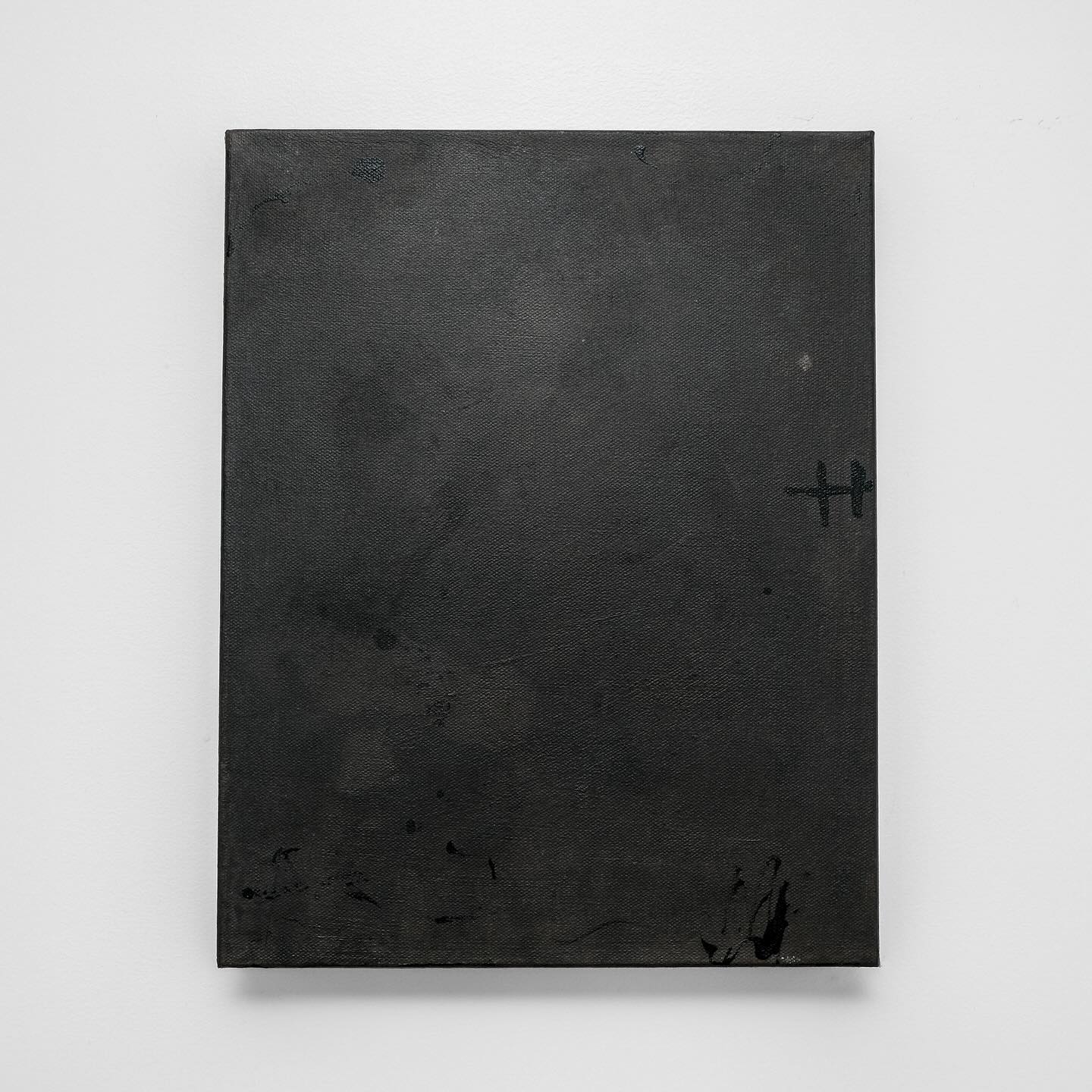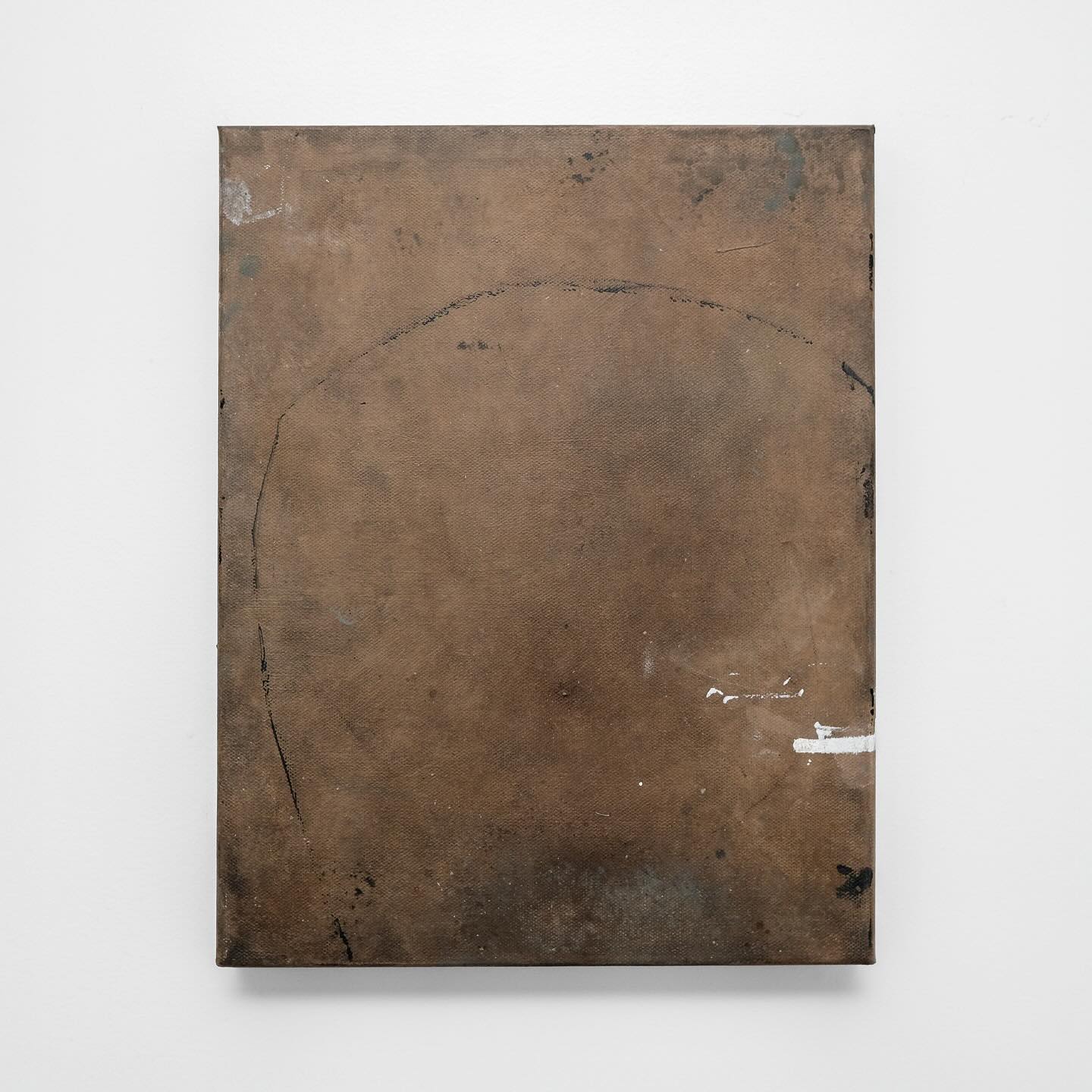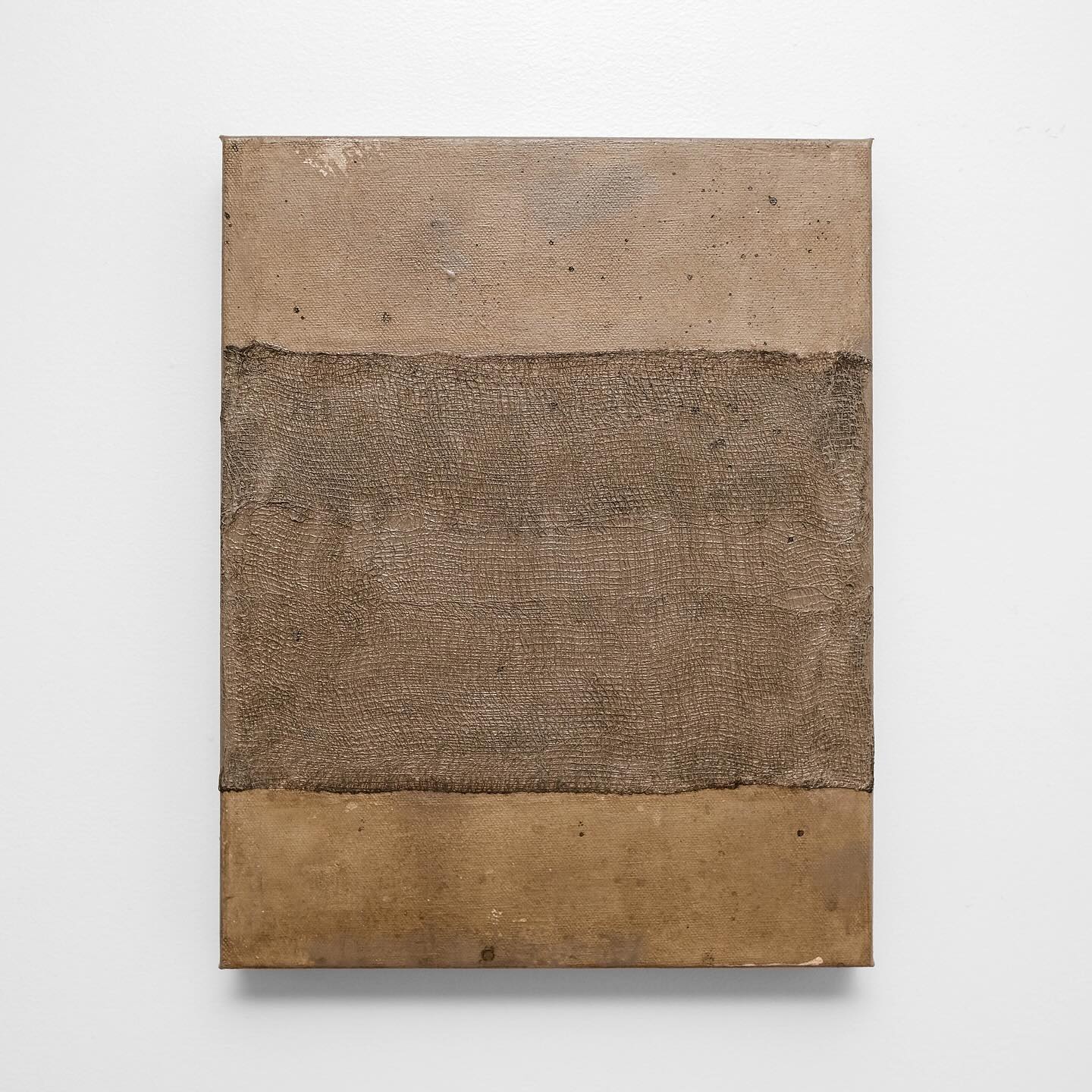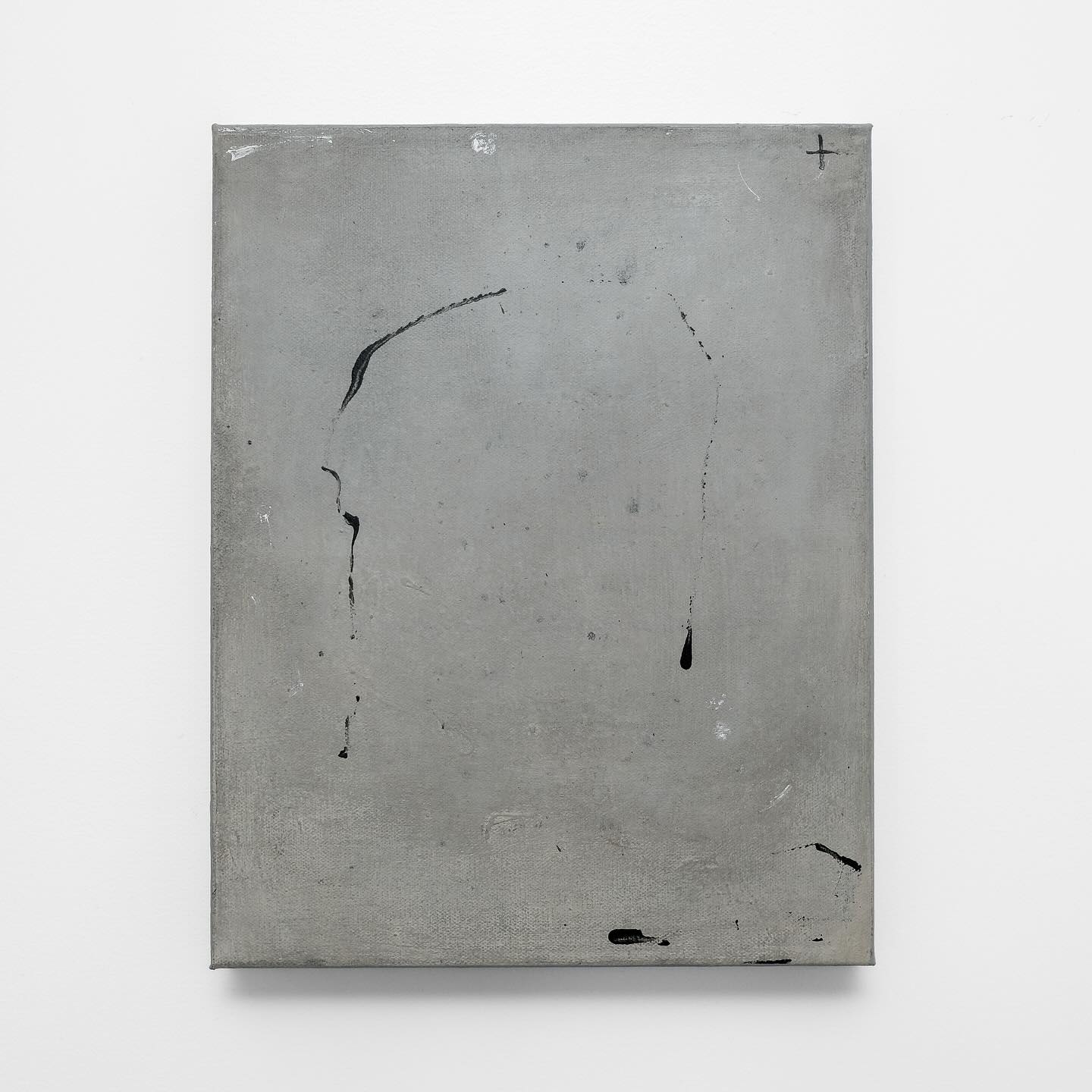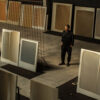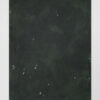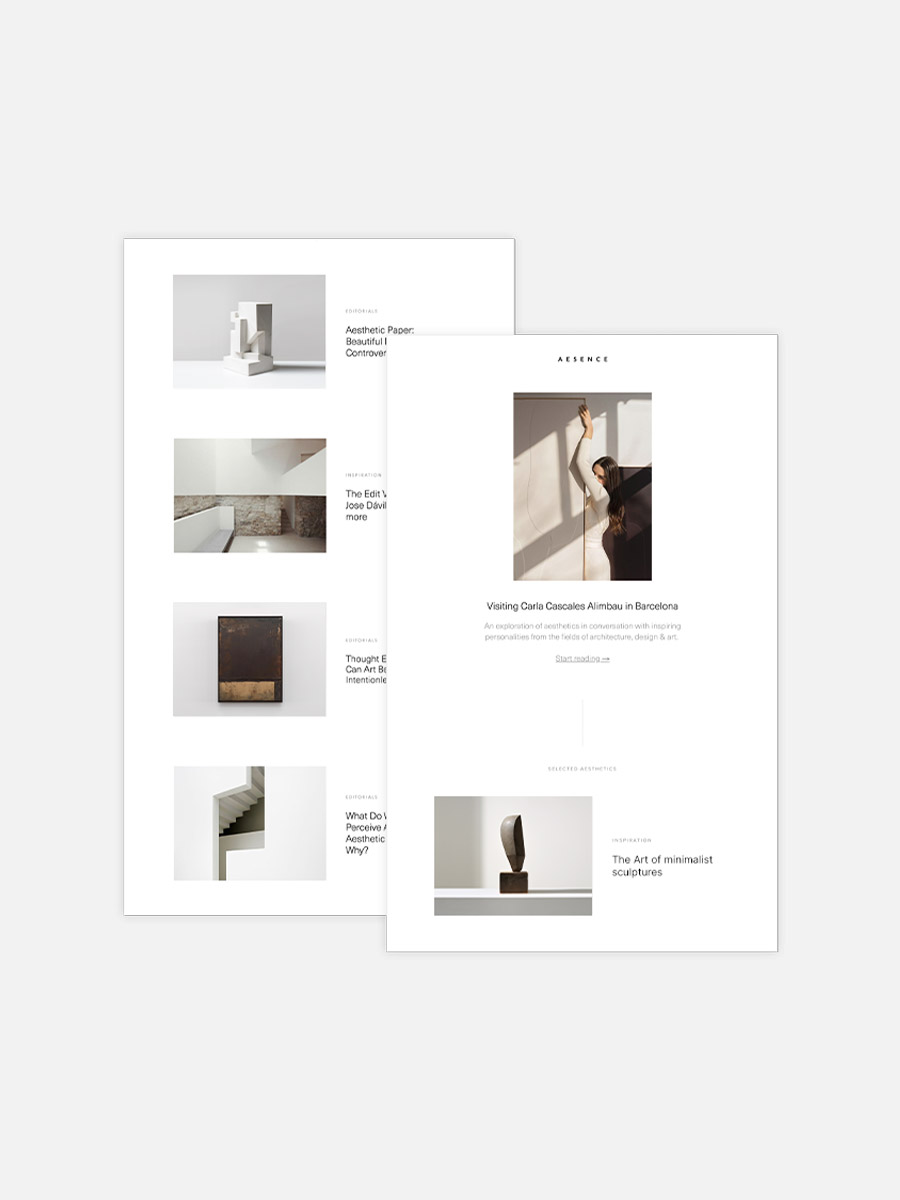“3 Questions for…” showcases and promotes the work of upcoming artists in the early stages of their careers. This time I would like to share with you the captivating works of Clara Lemos.
Clara Lemos (b. 1980) is a Portuguese artist whose abstract and minimalist paintings reveal depth and complexity through carefully constructed layers. Born in Guimarães and with a professional background in cancer research and human biology, her journey took her from Portugal through the Netherlands and Berlin before settling near Boston, where she now lives and works.
Inspired by the urban roughness of Berlin and other cities she lived in, the monochrome surfaces of her paintings conceal countless layers of markings, collages and textures. In their essence, they serve as a metaphor for the qualities she values most: quietness and self-reflection hiding a deep, kind, and compassionate core waiting to be discovered.
Her creative process is intuitive and meditative – she develops her works layer by layer without any preconceived notions. The result is an interplay of intention and chance, whereby the unexpected becomes the most treasured element of her art. To gain deeper insight into her creative process, I had the pleasure of asking the artist three questions about her work and artistic approach:
Clara, you hold a PhD in Human Biology and worked as a cancer researcher for 20 years – What inspired you to become an artist?
Though I wouldn’t have described myself as particularly “artistic” during childhood, I found myself drawn to art, fashion, and design in my early adult years. For a long time, I remained content as an observer, never considering that I might create art myself. That all shifted dramatically in January 2021, when I found myself on maternity leave during the global pandemic with an unprecedented amount of free time at my disposal.
Seeking a new hobby, I wanted something both practical and intuitive and acrylic painting emerged as the perfect fit. After researching techniques, absorbing countless online tutorials, and gathering basic supplies, I dove in headfirst. Within a week, I was completely captivated. My evenings became sacred creative time—once my son was asleep, I would lose myself in painting, exploring new techniques, and experimenting with different approaches.
Nowadays, the synergy between my artistic practice and scientific career creates a beautiful balance in my life. Art-making offers immediate gratification and intuitive expression—I can see results on canvas within hours or days. This stands in striking contrast to drug development, where patience and persistence are paramount as many experiments unfold over months and years, clinical trials span decades, and the ultimate validation of our work—a life-saving treatment reaching patients—may not materialize until years after the initial discovery. While science demands rigorous methodology, careful documentation, and systematic progress toward long-term goals, art allows me to embrace spontaneity, trust my instincts, and experience the immediate satisfaction of creation. Together, they satisfy different aspects of my creative and intellectual needs: science feeds my analytical mind and sense of purpose, while art nourishes my soul with instant creative fulfillment and emotional release.
How would you describe your work to someone who has never seen it?
When I describe my work to someone who has never seen it, I explain that I create abstract minimalist paintings—but my approach to minimalism isn’t about stripping away content. Instead, it’s about embedding meaning within carefully constructed layers that invite discovery. Each piece may appear simple at first glance, but closer examination reveals depth and complexity built through multiple layers of paint, subtle color variations, and intentional compositional choices. The content is there, but it’s hidden, waiting to be uncovered by the patient observer.
What I hope viewers take away from my paintings is a sense of quietude and contemplation. I want people to stop in front of my work not because it’s loud or demanding attention, but because there’s something substantial beneath the surface that draws them in. My goal is for viewers to feel a sense of peace and enter a meditative state while looking at my paintings—to experience that rare moment of stillness where they can slow down, breathe, and connect with the subtle richness that emerges when we take time to truly see rather than simply look.
What are you currently working on and what are your plans for the future? Are there any subjects that you would like to explore further?
My current project represents something of a homecoming—a new series deeply inspired by the urban roughness and raw energy of Berlin, a city that still feels like home and that I miss every single day. This body of work marks a return to my roots, channeling the gritty textures, weathered surfaces, and industrial beauty that define Berlin’s landscape. While maintaining my commitment to minimalism and working primarily in monochrome, these pieces embrace a more erratic, spontaneous quality than my recent work. The controlled restraint of my previous paintings gives way to something more visceral and immediate, reflecting the city’s own contradictions—it’s refined cultural sophistication alongside its unpolished, authentic character. Through this series, I’m finding a way to stay connected to Berlin’s spirit from afar, translating my longing for its streets, its history, and its particular brand of beautiful decay into layered compositions that capture both the roughness and the poetry of urban life. Each painting becomes a meditation on place and belonging, a way of carrying home with me wherever I am.
Looking toward the future, I’m drawn to exploring themes of impermanence and the fleeting nature of happiness through my art. I want to delve deeper into the idea that joy exists primarily in the present moment—that our attempts to grasp and hold onto experiences often prevent us from fully experiencing them. This exploration feels both artistically compelling and personally necessary, as it offers me a way to work through my own fears and internal struggles with letting go. I’m interested in how paint itself can embody these concepts—the way colors shift and blend unpredictably, how layers obscure and reveal simultaneously, and how each brushstroke exists only in that singular moment of creation. Through this work, I hope to find a visual language for acceptance, for the beauty that emerges when we stop fighting against change and instead learn to find peace in the transient nature of all things. It’s both an artistic challenge and a form of personal healing, using the canvas as a space to confront and ultimately embrace life’s fundamental uncertainties.
I want people to stop in front of my work not because it’s loud or demanding attention, but because there’s something substantial beneath the surface that draws them in.
